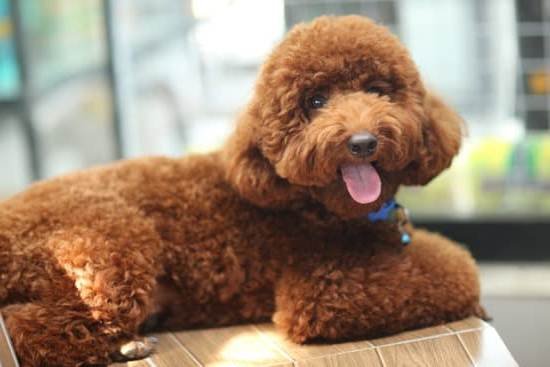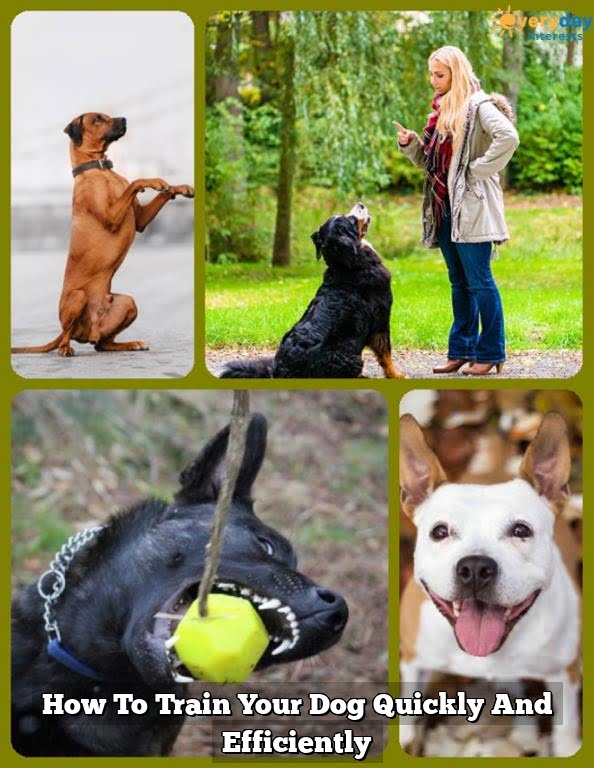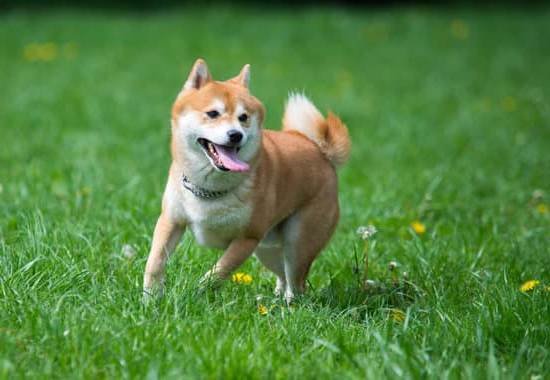Are you wondering how to potty train a dog quickly? Potty training is an essential skill for any dog, and with the right techniques, it can be achieved efficiently. By understanding the importance of potty training for dogs and implementing effective strategies, you can successfully train your furry friend to do their business in the appropriate place.
Potty training is crucial for maintaining a clean and sanitary living environment for both you and your dog. Additionally, it helps to establish good habits that promote a positive relationship between you and your pet. With a well-trained dog, you can enjoy peace of mind knowing that accidents are minimized, and your home remains odor-free.
In this article, we will discuss various strategies for potty training your dog quickly and effectively. From creating a potty training schedule to utilizing positive reinforcement techniques, we will explore the key steps involved in successful potty training. By following these guidelines, you can ensure that your dog develops good habits and becomes a well-behaved member of your household.
Creating a Potty Training Schedule
Establishing Regular Potty Breaks
One of the first steps in creating a potty training schedule is to establish regular potty breaks for your dog. This includes taking them outside first thing in the morning, after meals, before bedtime, and at regular intervals throughout the day. By providing these consistent opportunities for your dog to eliminate, you can help them develop good bathroom habits.
Tracking Bathroom Behavior
It’s also important to keep track of your dog’s bathroom behavior during the initial stages of potty training. By paying attention to when they typically need to go and any signs that indicate they need to potty, such as circling or sniffing around, you can better anticipate their needs and prevent accidents indoors.
Utilizing a Bathroom Command
In addition to setting a schedule, it’s helpful to incorporate a bathroom command into your potty training routine. Choose a specific word or phrase that you will use every time you take your dog outside to potty.
Over time, they will associate this command with the act of going to the bathroom and will learn to do so on cue. Using positive reinforcement techniques such as praise or treats when they go potty after being given the command can further reinforce this behavior.
By following these tips and remaining consistent with your schedule, you can effectively teach your dog how to potty train quickly and set them up for success in maintaining good bathroom habits in the future.
Choosing the Right Potty Spot
When it comes to potty training your dog quickly, one of the most important factors to consider is choosing the right potty spot. This will be the designated area where your dog is allowed to relieve themselves, so it’s crucial to select a suitable outdoor location that meets their needs. Here are some tips for selecting an appropriate potty spot for your furry friend.
First and foremost, you’ll want to consider accessibility and convenience when choosing a potty spot for your dog. The ideal location should be easily accessible from your home, as this will make it easier for both you and your pet to stick to the potty training schedule. Whether you have a backyard, patio, or nearby green space, be sure to choose a spot that is readily available for quick trips outside.
Additionally, consider the environment and surroundings of the chosen potty spot. Dogs are often sensitive to their surroundings and may have preferences when it comes to where they eliminate. Take note of any environmental factors that could impact your dog’s comfort level, such as noise level, presence of other animals, or exposure to natural elements like wind or rain.
Lastly, consistency is key when it comes to potty training success. Once you’ve selected a potty spot for your dog, make sure to consistently bring them there every time they need to go outside. Establishing a routine and sticking with it will help reinforce good habits and accelerate the potty training process.
| Factor | Tips |
|---|---|
| Accessibility | Choose a spot that is easily accessible from your home |
| Environment | Consider noise level, presence of other animals, and exposure to natural elements |
| Consistency | Establish a routine and stick with it for successful potty training |
Utilizing Positive Reinforcement
When it comes to potty training your dog quickly, utilizing positive reinforcement through reward-based training techniques can be incredibly effective. By associating the act of going potty in the right spot with positive experiences, you can encourage and motivate your dog to repeat this behavior. Here are some tips on how to incorporate positive reinforcement into your potty training efforts:
- Use treats: Whenever your dog successfully goes potty in the designated area, immediately reward them with a small treat. This will create a positive association with the action and reinforce the desired behavior.
- Verbal praise: In addition to treats, be sure to offer plenty of verbal praise and affection when your dog does their business in the right spot. Positive affirmations such as “good boy” or “good girl” can go a long way in reinforcing good potty habits.
- Use a clicker: Clicker training can be an effective tool for potty training. Whenever your dog eliminates in the chosen area, use a clicker to mark the behavior and then follow up with a treat or praise.
Consistency is key when it comes to using positive reinforcement for potty training. Be sure to provide immediate rewards and praise every time your dog goes potty in the correct spot, as this will help them understand what is expected of them.
Additionally, it’s important to avoid punishment or scolding if accidents occur. Instead, focus on rewarding and reinforcing the desired behavior. This approach will create a more positive and enjoyable experience for both you and your furry companion as you work towards successful potty training.
Remember that every dog learns at their own pace, so patience and perseverance are crucial when utilizing positive reinforcement for potty training. Stay consistent with your rewards and encouragement, and soon enough, your canine friend will understand where they should do their business.
Supervision and Consistency
Potty training a dog quickly requires consistent supervision and guidance. Without proper supervision, it can be challenging to reinforce good potty habits in your furry friend. In this section, we will discuss the importance of supervision and consistency in the potty training process, as well as provide tips for effectively implementing these key components.
Consistent Routine
Establishing a consistent routine is crucial when potty training your dog. This involves taking your dog outside to their designated potty spot at the same times each day, such as first thing in the morning, after meals, before bedtime, and so on. By maintaining a regular schedule, you can help your dog understand when it’s time to go potty and prevent accidents indoors.
Active Supervision
During the potty training process, it’s essential to actively supervise your dog both indoors and outdoors. When indoors, keep a close eye on your dog for any signs that they need to go potty, such as sniffing around or circling. If you notice these behaviors, immediately take them outside to their designated spot. While outdoors, remain present and attentive to provide positive reinforcement when they eliminate in the appropriate area.
Consistency With Commands and Rewards
Consistency also applies to the commands and rewards used during potty training. Use the same verbal cues each time you take your dog outside, such as “go potty” or “do your business.” Additionally, consistently praise and reward your dog when they successfully go potty in the designated area. This positive reinforcement will help solidify their understanding of where they should eliminate.
By maintaining strict supervision and consistency throughout the potty training process, you can effectively teach your dog where and when to go potty. These efforts combined with patience will lead to quicker success in establishing good potty habits for your furry companion.
Dealing With Accidents
Potty training a dog quickly can be a challenging task, and it’s not uncommon for accidents to occur during the process. It’s important to remember that setbacks are a normal part of the training journey, and how you handle these accidents can make a big difference in the success of your dog’s potty training.
When accidents happen, it’s essential to remain calm and avoid scolding or punishing your dog. Instead, focus on reinforcing positive behaviors and continue with consistent training techniques.
One effective way to handle accidents during potty training is to clean up the mess thoroughly and immediately. Dogs have a strong sense of smell, and if an accident isn’t properly cleaned, they may be more likely to potty in the same spot again. Use an enzymatic cleaner specifically designed for pet messes to ensure that any odor is eliminated.
Additionally, keep an eye on your dog for signs that they need to go outside, such as sniffing around or circling in a specific area. By recognizing these cues and promptly taking your dog outside, you can help prevent future accidents from occurring.
Incorporating positive reinforcement into your training approach can also be beneficial when dealing with accidents. When your dog successfully goes potty in the designated spot, be sure to praise them enthusiastically and offer a small treat as a reward.
This will help reinforce the desired behavior and encourage your dog to continue using the appropriate potty area. Remember that consistency is key when it comes to potty training, so even when accidents happen, stay patient and continue working with your dog using positive reinforcement techniques.
| Handling Setbacks | Recommendations |
|---|---|
| Remain Calm | Avoid scolding or punishing your dog |
| Clean Up Accidents | Use enzymatic cleaner designed for pet messes |
| Positive Reinforcement | Praise and reward successful potty behaviors |
By following these tips on how to handle setbacks during the potty training process, you can effectively navigate through any accidents that may occur while teaching your dog good potty habits. Stay patient, maintain consistency in your training routine, and remember that with time and perseverance, you’ll be able to successfully potty train your dog quickly.
Crate Training for Potty Training
Crate training can be an effective tool for quickly potty training a dog. When used correctly, a crate provides a safe and comfortable space for your dog while also helping to reinforce good potty habits. The key to successful crate training is to make the crate a positive and inviting space for your dog.
Start by introducing your dog to the crate in a positive way. Place treats, toys, and soft bedding inside the crate to encourage your dog to explore and enter the space. You can also feed your dog meals inside the crate to create a positive association with it. It’s important not to force your dog into the crate, as this can create negative associations with it.
Once your dog is comfortable entering the crate voluntarily, you can begin using it for potty training. Dogs have an instinct not to soil their sleeping area, so confining them in a crate can help prevent accidents indoors. Be sure to take your dog outside for potty breaks before placing them in the crate and immediately after letting them out.
It’s crucial to remember that crates should never be used as punishment, and dogs should not be left in crates for extended periods of time. With patience and consistency, utilizing a crate for potty training can help accelerate the training process and set your dog up for success in developing good potty habits.
By incorporating crate training into your overall potty training routine, you can provide your dog with structure and guidance while promoting positive behaviors. As with any aspect of potty training, patience and perseverance are key when utilizing a crate as part of the training process.
Patience and Perseverance
Potty training a dog quickly requires patience and perseverance. It’s important to maintain a positive attitude throughout the process, as it can be challenging at times. Here are some tips on how to stay motivated and focused during the potty training journey:
- Set realistic expectations: Understand that potty training takes time and every dog learns at their own pace. Be patient with your pet and avoid getting frustrated if progress is slow.
- Stay consistent: Stick to the potty training schedule and be diligent about taking your dog outside or to their designated spot at regular intervals. Consistency is key in reinforcing good habits.
- Keep a positive mindset: Focus on the small victories and celebrate each successful potty break. This will help you stay motivated and keep a positive outlook on the training process.
In addition to maintaining a positive attitude, it’s important to persevere through any setbacks or challenges that may arise during the potty training process. Remember that every dog is different, and some may take longer to grasp the concept of where they should do their business. Here are some additional tips for staying determined and committed to the training:
- Seek support from other pet owners or professionals: If you’re feeling discouraged, reach out to friends or family members who have successfully potty trained their dogs for advice and encouragement.
- Take breaks when needed: Training a dog can be mentally taxing, so it’s okay to take breaks if you’re feeling overwhelmed. This will give you time to recharge and come back with a refreshed mindset.
- Focus on the end goal: Remind yourself of the benefits of having a fully potty trained dog, such as convenience, cleanliness, and improved pet-owner bond. Keeping your eye on the prize will help you stay motivated throughout the process.
By maintaining patience and perseverance, along with a positive attitude, you’ll be able to effectively potty train your dog quickly while building a strong foundation for good potty habits in the long run.
Troubleshooting Common Potty Training Issues
Potty training a dog quickly can be a challenging task, especially when faced with common issues such as marking and anxiety. Marking, which involves the dog urinating on vertical surfaces to establish territory, is a natural behavior for many dogs, but it can become a problem if not properly addressed.
Similarly, anxiety can also lead to potty training setbacks, as stressed or scared dogs may have accidents in the house. In this section, we will discuss how to troubleshoot these common potty training issues and ensure a successful training process.
One effective way to address marking behavior is by neutering or spaying your dog. This can reduce their motivation to mark their territory. Another important step is to clean any marked areas thoroughly with an enzymatic cleaner to eliminate the scent that encourages the dog to mark the same spot again. Additionally, providing plenty of outdoor time for your dog to explore and relieve themselves can also decrease the urge to mark inside the house.
When dealing with potty training setbacks caused by anxiety, it’s important to identify the source of your dog’s stress and work on alleviating it. This could involve creating a safe and comfortable environment for your dog at home, providing plenty of mental and physical stimulation through play and exercise, or seeking professional help from a veterinarian or animal behaviorist if necessary.
By addressing these common potty training issues with patience and understanding, you can help your dog develop good potty habits and maintain them in the long run.
Conclusion
In conclusion, successfully potty training a dog requires patience, consistency, and positive reinforcement. By following a well-structured potty training schedule, choosing the right potty spot, and utilizing techniques such as crate training and positive reinforcement, dog owners can effectively train their pets to eliminate in appropriate areas. It is important to remember that accidents may happen, and it is crucial to handle setbacks with understanding and patience.
Maintaining good potty habits for your dog after the initial training process is just as important as the training itself. By continuing to supervise your dog and establish a routine, you can help reinforce the lessons learned during the potty training process. Additionally, troubleshooting common issues such as marking and anxiety can help ensure that your dog continues to exhibit good potty behavior.
Overall, potty training a dog quickly is achievable with the right approach, dedication, and perseverance. By understanding your pet’s needs and behaviors, and consistently reinforcing positive habits, you can set your dog up for success in maintaining good potty habits for the long term. With these tips on how to potty train a dog quickly in mind, dog owners can celebrate the milestones achieved throughout the training process and enjoy a clean and well-behaved pet.
Frequently Asked Questions
How Do You Potty Train a Dog ASAP?
Potty training a dog as soon as possible requires consistency, patience, and positive reinforcement. Take the dog outside frequently, especially after meals and naps, and use a command word to encourage elimination.
How Long Does It Take to Teach a Dog to Potty Train?
The time it takes to potty train a dog varies depending on the individual dog’s age, breed, and temperament. On average, it can take anywhere from a few weeks to several months to fully potty train a dog.
How Do You Potty Train a Dog in 3 Days?
To potty train a dog in 3 days, you need to be extremely dedicated and committed to the process. Limit the dog’s access to indoor space, take them outside frequently, reward successful elimination, and be diligent in watching for signs that they need to go. Consistency is key in achieving success in such a short timeframe.

Welcome to the blog! I am a professional dog trainer and have been working with dogs for many years. In this blog, I will be discussing various topics related to dog training, including tips, tricks, and advice. I hope you find this information helpful and informative. Thanks for reading!





